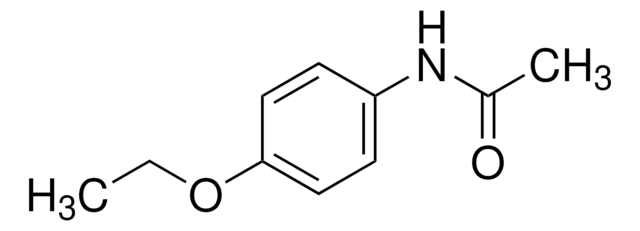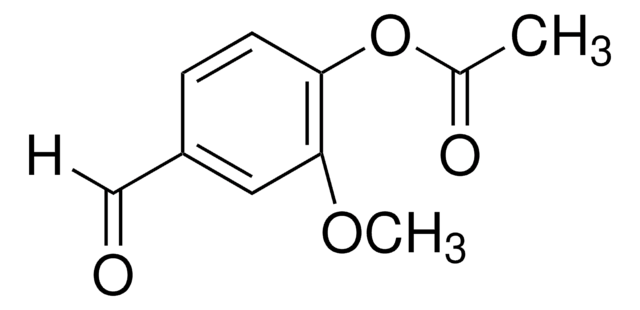1711009
USP
Vanilline
United States Pharmacopeia (USP) Reference Standard
Synonyme(s) :
4-hydroxy-3-méthoxybenzaldéhyde, Aldéhyde vanillique
About This Item
Produits recommandés
Qualité
pharmaceutical primary standard
Densité de vapeur
5.3 (vs air)
Pression de vapeur
>0.01 mmHg ( 25 °C)
Famille d'API
vanillin
Fabricant/nom de marque
USP
pb
170 °C/15 mmHg (lit.)
Pf
81-83 °C (lit.)
Application(s)
pharmaceutical (small molecule)
Format
neat
Chaîne SMILES
COc1cc(C=O)ccc1O
InChI
1S/C8H8O3/c1-11-8-4-6(5-9)2-3-7(8)10/h2-5,10H,1H3
Clé InChI
MWOOGOJBHIARFG-UHFFFAOYSA-N
Vous recherchez des produits similaires ? Visite Guide de comparaison des produits
Description générale
Application
It has been used as reference standard in calibrating hot stage; during thermomicroscopic investigation performed with optical polarizing microscope; usually equipped with a hot stage and temperature controller.
Remarque sur l'analyse
Autres remarques
Mention d'avertissement
Warning
Mentions de danger
Conseils de prudence
Classification des risques
Eye Irrit. 2
Code de la classe de stockage
11 - Combustible Solids
Classe de danger pour l'eau (WGK)
WGK 1
Point d'éclair (°F)
319.6 - 321.4 °F - closed cup
Point d'éclair (°C)
159.8 - 160.8 °C - closed cup
Faites votre choix parmi les versions les plus récentes :
Certificats d'analyse (COA)
Désolés, nous n'avons pas de COA pour ce produit disponible en ligne pour le moment.
Si vous avez besoin d'assistance, veuillez contacter Service Clients
Déjà en possession de ce produit ?
Retrouvez la documentation relative aux produits que vous avez récemment achetés dans la Bibliothèque de documents.
Les clients ont également consulté
Notre équipe de scientifiques dispose d'une expérience dans tous les secteurs de la recherche, notamment en sciences de la vie, science des matériaux, synthèse chimique, chromatographie, analyse et dans de nombreux autres domaines..
Contacter notre Service technique








